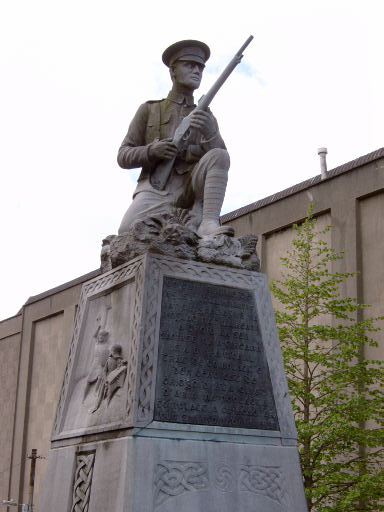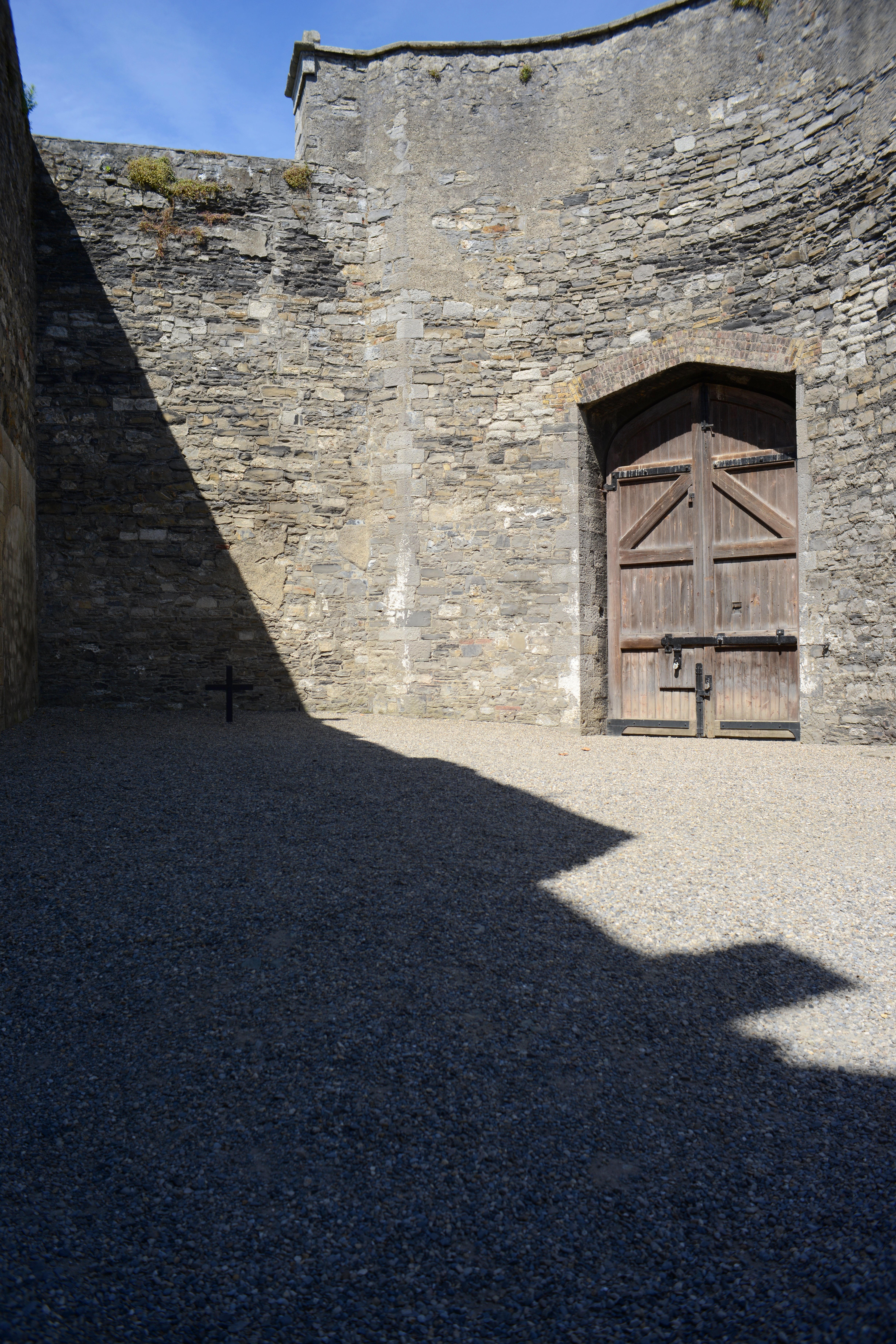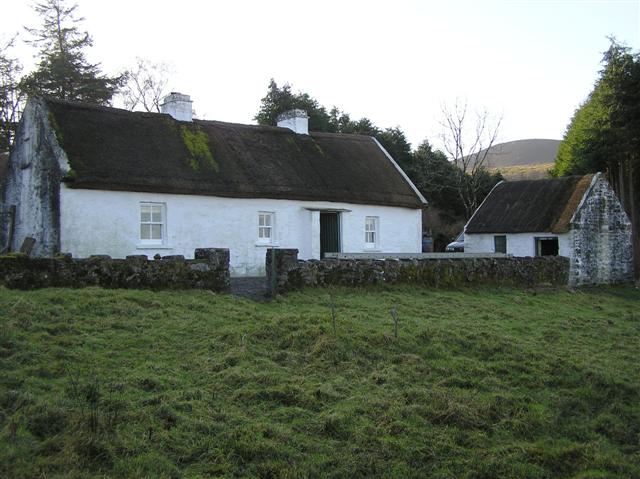|
Cathal O'Shannon
Cathal O'Shannon (9 June 1890 – 4 October 1969) was an Irish politician, trade unionist and journalist. Early years Charles Francis Shannon was born in Randalstown, County Antrim, he was the third child of Charles and Alice Shannon. As a child the family moved to his mother's hometown of Draperstown, County Londonderry where his father worked for the railway line. Growing up, both his family and locality influenced his interest in trade unionism, the Irish language, and Irish Republicanism. He was educated at Draperstown national school and St Columb's College, Derry. It was at Columb's that he studied history as a subject and developed an interest in journalism. Following the death of his father he moved to Belfast where he began to train for the civil service. Republicanism and the Revolutionary era It was while he was in Belfast that he became a member of Conradh na Gaeilge and started writing articles for the ''Peasant'', ''Sinn Féin'' and ''An Claidheamh Soluis'' public ... [...More Info...] [...Related Items...] OR: [Wikipedia] [Google] [Baidu] |
Teachta Dála
A Teachta Dála ( , ; plural ), abbreviated as TD (plural ''TDanna'' in Irish language, Irish, TDs in English), is a member of Dáil Éireann, the lower house of the Oireachtas, Oireachtas (the Irish Parliament). It is the equivalent of terms such as Member of parliament, ''Member of Parliament'' (MP) or ''Member of Congress'' used in other countries. The official translation of the term is "Deputy to the Dáil", although a more literal translation is "Assembly Delegate". Overview For electoral purposes, the Republic of Ireland is divided into areas known as Dáil constituencies, constituencies, each of which elects three, four, or five TDs. Under the Constitution of Ireland, Constitution, every 20,000 to 30,000 people must be represented by at least one TD. A candidate to become a TD must be an Irish citizen and over 21 years of age. Members of the judiciary, the Garda Síochána, and the Defence Forces (Ireland), Defence Forces are disqualified from membership of the Dáil. U ... [...More Info...] [...Related Items...] OR: [Wikipedia] [Google] [Baidu] |
Derry
Derry, officially Londonderry (), is the second-largest city in Northern Ireland and the fifth-largest city on the island of Ireland. The name ''Derry'' is an anglicisation of the Old Irish name (modern Irish: ) meaning 'oak grove'. The old walled city lies on the west bank of the River Foyle, which is spanned by two road bridges and one footbridge. The city now covers both banks (Cityside on the west and Waterside on the east). The population of the city was 83,652 at the 2001 Census, while the Derry Urban Area had a population of 90,736. The district administered by Derry City and Strabane District Council contains both Londonderry Port and City of Derry Airport. Derry is close to the border with County Donegal, with which it has had a close link for many centuries. The person traditionally seen as the founder of the original Derry is Saint , a holy man from , the old name for almost all of modern County Donegal, of which the west bank of the Foyle was a part bef ... [...More Info...] [...Related Items...] OR: [Wikipedia] [Google] [Baidu] |
Irish Volunteers
The Irish Volunteers ( ga, Óglaigh na hÉireann), sometimes called the Irish Volunteer Force or Irish Volunteer Army, was a military organisation established in 1913 by Irish nationalists and republicans. It was ostensibly formed in response to the formation of its Irish unionist/loyalist counterpart the Ulster Volunteers in 1912, and its declared primary aim was "to secure and maintain the rights and liberties common to the whole people of Ireland". The Volunteers included members of the Gaelic League, Ancient Order of Hibernians and Sinn Féin, and, secretly, the Irish Republican Brotherhood (IRB). Increasing rapidly to a strength of nearly 200,000 by mid-1914, it split in September of that year over John Redmond's commitment to the British war effort, with the smaller group retaining the name of "Irish Volunteers". Formation Background Home Rule for Ireland dominated political debate between the two countries since Prime Minister William Ewart Gladstone introduc ... [...More Info...] [...Related Items...] OR: [Wikipedia] [Google] [Baidu] |
James Connolly
James Connolly ( ga, Séamas Ó Conghaile; 5 June 1868 – 12 May 1916) was an Irish republican, socialist and trade union leader. Born to Irish parents in the Cowgate area of Edinburgh, Scotland, Connolly left school for working life at the age of 11, and became involved in socialist politics in the 1880s. Although mainly known for his position in Irish socialist and republican politics, he also took a role in Scottish and American politics. He was a member of the Industrial Workers of the World and founder of the Irish Socialist Republican Party. With James Larkin, he was centrally involved in the Dublin lock-out of 1913, as a result of which the two men formed the Irish Citizen Army (ICA) that year; they also founded the Irish Labour Party along with William O'Brien. Connolly was the long term right-hand man to Larkin in the Irish Transport and General Workers' Union (ITGWU) until taking over leadership of both the union and its military wing the ICA upon Larkin's depa ... [...More Info...] [...Related Items...] OR: [Wikipedia] [Google] [Baidu] |
Irish Transport And General Workers' Union
The Irish Transport and General Workers Union (ITGWU), was a trade union representing workers, initially mainly labourers, in Ireland. History The union was founded by James Larkin in January 1909 as a general union. Initially drawing its membership from branches of the Liverpool-based National Union of Dock Labourers, from which Larkin had been expelled, it grew to include workers in a range of industries. The ITGWU logo was the Red Hand of Ulster, which is synonymous with ancient Gaelic Ulster. The ITGWU was at the centre of the syndicalist-inspired Dublin Lockout in 1913, the events of which left a lasting impression on the union and hence on the Irish Labour Movement. After Larkin's departure for the United States in 1914 in the wake of the Lockout, James Connolly led the ITGWU until his execution in 1916 in the wake of the Easter Rising. In turn, William O'Brien became the union's leading figure, and ultimately served as general secretary for many years. Thro ... [...More Info...] [...Related Items...] OR: [Wikipedia] [Google] [Baidu] |
Na Fianna Éireann
NA, N.A., Na, nA or n/a may refer to: Chemistry and physics * Sodium, symbol Na, a chemical element * Avogadro constant (''N''A) * Nucleophilic addition, a type of reaction in organic chemistry * Numerical aperture, a number that characterizes a range of angles in an optical system * nA, the symbol for nanoampere * Naturally aspirated engine Biology and medicine * Na (tree) or ''Mesua ferrea'', a species of tree native to Sri Lanka * Neuroacanthocytosis, a neurological condition * '' Nomina Anatomica'', a former international standard for human anatomical nomenclature * Noradrenaline, a hormone * Nucleic acid analogue, compounds analogous to naturally occurring RNA and DNA Places Current * Namibia (ISO country code) * Naples (car number plate code: NA), Italy * North America, a continent * North Africa, a subcontinent Historical * Netherlands Antilles (former international vehicle registration code: NA) * Na (Chinese state), a small state of the Chinese Zhou dynasty from ... [...More Info...] [...Related Items...] OR: [Wikipedia] [Google] [Baidu] |
Irish Republican Brotherhood
The Irish Republican Brotherhood (IRB; ) was a secret oath-bound fraternal organisation dedicated to the establishment of an "independent democratic republic" in Ireland between 1858 and 1924.McGee, p. 15. Its counterpart in the United States of America was initially the Fenian Brotherhood, but from the 1870s it was Clan na Gael. The members of both wings of the movement are often referred to as " Fenians". The IRB played an important role in the history of Ireland, as the chief advocate of republicanism during the campaign for Ireland's independence from the United Kingdom, successor to movements such as the United Irishmen of the 1790s and the Young Irelanders of the 1840s. As part of the New Departure of the 1870s–80s, IRB members attempted to democratise the Home Rule League. and its successor, the Irish Parliamentary Party, as well as taking part in the Land War. The IRB staged the Easter Rising in 1916, which led to the establishment of the first Dáil Éireann i ... [...More Info...] [...Related Items...] OR: [Wikipedia] [Google] [Baidu] |
RTÉ
(RTÉ) (; Irish for "Radio & Television of Ireland") is the national broadcaster of Ireland headquartered in Dublin. It both produces and broadcasts programmes on television, radio and online. The radio service began on 1 January 1926, while regular television broadcasts began on 31 December 1961, making it one of the oldest continuously operating public service broadcasters in the world. RTÉ also publishes a weekly listings and lifestyle magazine, the ''RTÉ Guide''. RTÉ is a statutory body, overseen by a board appointed by the Government of Ireland, with general management in the hands of the Executive Board, headed by the Director-General. RTÉ is regulated by the Broadcasting Authority of Ireland. RTÉ is financed by television licence fee and through advertising, with some of its services funded solely by advertising, while others are funded solely by the licence fee. Radio Éireann, RTÉ's predecessor and at the time a section of the Department of Posts and Telegraphs ... [...More Info...] [...Related Items...] OR: [Wikipedia] [Google] [Baidu] |
Denis McCullough
Denis McCullough (24 January 1883 – 11 September 1968) was a prominent Irish nationalist political activist in the early 20th century, who served as President of the Irish Republican Brotherhood (IRB) from 1915 to 1916. Early career – IRB activist McCullough was born at 1 Barrack Street, Belfast, on 24 January 1883, to Daniel McCullough, a publican, and Margaret Magee. McCullough was a separatist nationalist from an early age. Both his father and grandfather were in the Irish Republican Brotherhood (IRB), as was his brother. When he was 17, his father had him inducted into the IRB at the side door of a pub by a man who seemed to view the ritual as an unpleasant distraction to a night of drinking.F.S.L. Lyons. ''Ireland Since the Famine'', Fontana Publishing, 1973; OCLC 800472120, 2 volumes (880 pages), p. 315 The event disillusioned McCullough with the IRB, and he took it upon himself to revitalise the organisation, with assistance from, among others, Bulmer Hobson and Seá ... [...More Info...] [...Related Items...] OR: [Wikipedia] [Google] [Baidu] |
Bulmer Hobson
John Bulmer Hobson (14 January 1883 – 8 August 1969) was a leading member of the Irish Volunteers and the Irish Republican Brotherhood (IRB) before the Easter Rising in 1916.D.J. Hickey & J. E. Doherty, ''A New Dictionary of Irish History from 1800'', pp. 206-07, Gill & Macmillan, 2003; Although he was a member of the IRB which had planned the Rising, he opposed and attempted to prevent it. He swore Patrick Pearse into the IRB in late 1913. He was chief of staff of Fianna Éireann, which he helped to found. Early life Hobson was born at 5 Magdala Street, Belfast, to Benjamin Hobson, a grocer originally from County Armagh, and Mary Ann Bulmer, who was from England. However, numerous sources erroneously cite his place of birth as Holywood, County Down.René MacColl & Hamish Hamilton, ''Roger Casement: A New Judgment'', p. 312, 1956; In 1901, the family was living in Hopefield Avenue in Belfast, before moving to the townland of Ballycultra, outside Holywood, by 1911. Hobson ... [...More Info...] [...Related Items...] OR: [Wikipedia] [Google] [Baidu] |
Seán Mac Diarmada
Seán Mac Diarmada (27 January 1883 – 12 May 1916), also known as Seán MacDermott, was an Irish republican political activist and revolutionary leader. He was one of the seven leaders of the Easter Rising of 1916, which he helped to organise as a member of the Military Committee of the Irish Republican Brotherhood (IRB) and was the second signatory of the Proclamation of the Irish Republic. He was executed for his part in the Rising at age 33. Brought up in rural County Leitrim, he was a member of many associations which promoted the cause of the Irish language, Gaelic revival and Irish nationalism in general, including the Gaelic League and (early in his career) the Irish Catholic fraternity the Ancient Order of Hibernians. He was national organiser for Sinn Féin, and later manager of the newspaper '' Irish Freedom'', started in 1910 by Bulmer Hobson and others. Early life Mac Diarmada was born John MacDermott in Corranmore, close to Kiltyclogher in County L ... [...More Info...] [...Related Items...] OR: [Wikipedia] [Google] [Baidu] |
An Claidheamh Soluis
''An Claidheamh Soluis'' () was an Irish nationalist newspaper published in the early 20th century by '' Conradh na Gaeilge'' (the Gaelic League). It was named for the "Sword of Light" (in modern spelling ''Claíomh Solais'') of Gaelic myth. Eoin MacNeill was its first editor, overseeing its publication from 1899 to 1901. In 1900 the League took control of the weekly bilingual paper ''Fáinne an Lae'', when its editor went bankrupt. ''Fáinne an Lae'' was merged with ''An Claidheamh Soluis'' under the title ''An Claidheamh Soluis agus Fáinne an Lae''. From, 1903 to 1909 the paper was edited by Pádraig Pearse, the teacher and barrister who later became a key figure in the Easter Rising in 1916. Under his editorship the paper played a prominent role in the Irish Literary Revival, publishing original literary works in both Irish and English and devoting considerable space to commentary on cultural matters. From 1909 to 1916 the editor was Seán Mac Giollarnáth Seán M ... [...More Info...] [...Related Items...] OR: [Wikipedia] [Google] [Baidu] |





